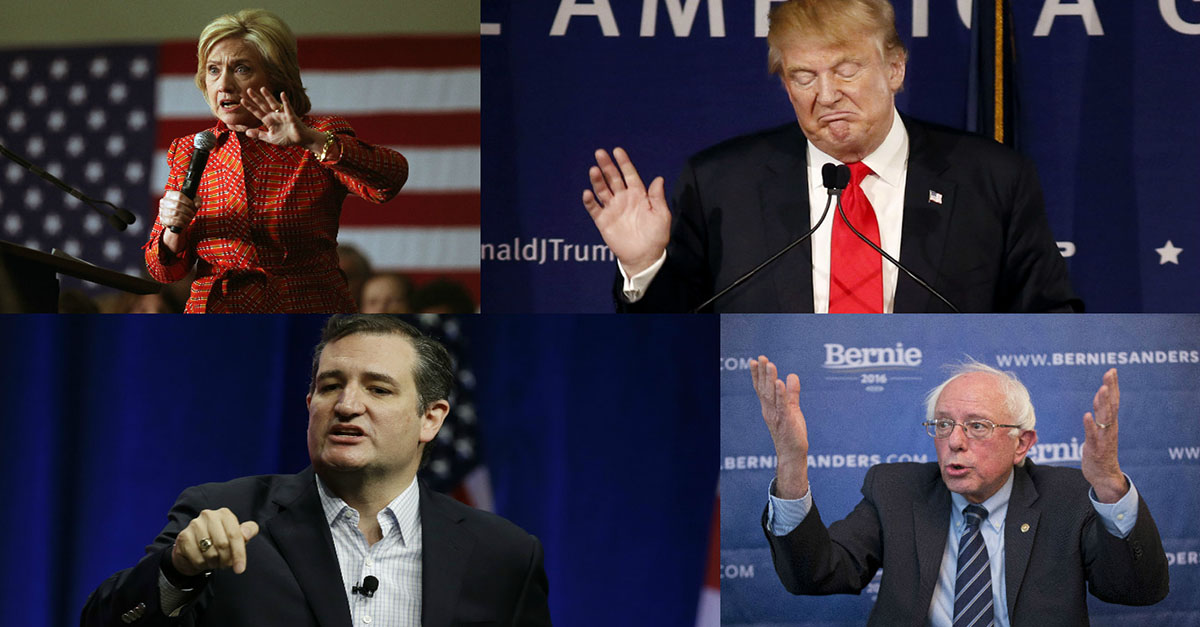The United States is as good a democracy as any other in formal terms but there has been a great amount of despair about the actual control its citizens exercise over the country’s political institutions and policies. Between them, two political parties divide up the US political spectrum, creating a narrow zone of elite consensus within which politics is allowed to play. The stranglehold of big business over election finance, aided by some significant court decisions, helps fix the boundaries of this elite consensus.
But then democracy has a way of throwing up surprises. The 2016 presidential election is different from earlier contests because of the way in which this widely resented elite consensus is being challenged from left and right. In this sense, both Donald Trump, the by-now famous Republican hate-monger, and Bernie Sanders, the challenger to Hillary Clinton’s bid for the Democratic Party’s nomination, represent a similar political impulse. A huge public sentiment, in its primordial form, is trying to defy the limits that the elite consensus affords people – turning the primaries into a battle between elitism and populism.
Populists appeal directly to strongly felt hopes and fears. And it is here that the resemblance between Trump and Sanders ends abruptly. Trump is seeking to make capital of people’s deep fears and anxieties. Sanders, on the other hand, is appealing to what remains of the American people’s hopes of getting a fair and just deal in society.
Sanders presents a simple pitch based on three clear socio-economic issues, and a political one. He promises free healthcare, free higher education (primary education being already free) and a decent minimum wage, for all. He is unhesitant in saying that for achieving these he will indeed raise taxes, though the bulk of the money will come from taxing the top fraction of a percent. And he provides figures to back his proposals. The core political element of his programme is that he promises to ‘really’ clamp down on corporate influence over politics and political funding. The fact that he takes no funds from the big corporates makes his claim credible among voters.
What makes Sanders’ programme attractive to poor and middle class America is the growing inequality in the country. But the humanistic logic of his four key demands is winning him a following even among those who may not be the ‘biggest gainers’ of his proposed reforms – eg. white, college-educated, young men.
If the rest of the world is waiting eagerly for the results of the first Democratic Party primary in Iowa on Monday, it is because of this humanist and idealist content of Sanders’ campaign. The next primaries are in New Hampshire, where the polls show the ‘socialist’ Sanders leading Clinton. Although these are the only two states yet where Sanders is giving such a strong challenge to Clinton – and the latter stays comfortably ahead in country-wide opinion polls – the results of these first two states have historically given an important boost to whoever wins them.
What Sanders means to the world
Apart from the economic and political influence that it exercises globally, the US has a strong ideological impact on the world too. American soft power has been especially devastating in terms of its export of neoliberal ideology, wherein corporates are the preferred vehicle for economic activity, even in the social sector, with the role of governments relegated to smaller and smaller niches.
If Bernie Sanders becomes the next president of the United States, free health, education, and a decent minimum wage – and a clear message to big business to rein in its economic greed and political aspirations – can be expected to become strong elements of US national policy. This will hit at the very heart of the neoliberal global establishment. It could significantly weaken this establishment’s ideological strength, which it currently packages so well that it has been able to sell it successfully to a very big part of the global population, especially the middle and aspirational classes.
Now, if a font of such an alternative discourse, as anchored by Sanders’s campaign, erupts from the very epicentre of the global neoliberal order, it could have a strong cascading effect. What Sanders demands may already be standard fare in many European countries but social services there are wilting under the pressure of austerity. For developing countries, making free health and education and decent minimum wages for all the responsibility of the state can become the cornerstone of a new politics.
Of course, the fate of Sanders is not known and one ought not to give the possible result of the presidential election in the US any disproportionate or implausible weight in term of our political futures. Even if it comes to pass, such a favourable result will be the child of its times – with its complex social and political realities – and its possible global impact would also be tempered by that context. But we must remember that politics and history do not follow linear logics. Iowa on Monday may well open a new chapter in the global struggle for a more just and equal world.
As well as...
submitted by relevantlife











